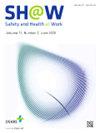煤矿管理人员避责行为影响因素的多层次层次结构分析
IF 2.9
3区 医学
Q1 PUBLIC, ENVIRONMENTAL & OCCUPATIONAL HEALTH
引用次数: 0
摘要
在中国煤炭行业,普遍存在的避责行为(BAB)极大地影响了煤矿事故的发生。因此,杜绝煤矿管理人员的避责行为,提高煤矿企业的管理水平,对于中国煤炭工业的安全发展十分必要。本文在半结构化访谈和问卷调查(20 位煤矿中层管理人员)的基础上,运用基础理论和 Nvivo 软件定性研究方法,对访谈数据进行开放式、主轴式和选择性编码。然后,构建了煤矿管理人员 BAB 影响因素的指标体系。采用 DEMATEL-ISM 方法计算了各影响因素的影响度、受影响度、中心度和原因度,建立了煤矿企业管理者 BAB 影响因素的层次模型。煤矿经理人BAB影响因素指标体系包括个人因素、组织因素、制度环境因素和情境因素四个层次、12个影响因素。层次模型确定了 8 个因果因素和 4 个结果因素,其中中心度排名前三位的安全管理(15.355)、工作态度(14.380)和班组绩效(14.281)是影响煤矿管理人员回避行为的关键因素;构建了 3 级多层次结构,从直接原因、间接原因和根本原因三个方面反映了煤矿管理人员 BAB 影响因素之间的相互作用,并提出了相应的改进措施。本研究为制止煤矿管理人员的BAB提供了理论补充和实践指导。本文章由计算机程序翻译,如有差异,请以英文原文为准。
Multi-level Hierarchical Structure Analysis of Influencing Factors of Coal Mine Managers' Blame Avoidance Behavior
Background
In the Chinese coal industry, widespread blame avoidance behavior (BAB) greatly impacts coal mine accidents. Therefore, it is necessary to stop the BAB of coal mine managers and raise the management level of coal mine enterprises for the safe development of Chinese coal industry.
Methods
Based on the semi-structured interviews and questionnaire surveys (20 middle-level managers in coal mines), this paper used the Grounded Theory and Nvivo Software qualitative research methodology to open, spindle, and selectively encode the interview data. Then, an index system of factors influencing BAB of coal mine managers was constructed. The influence degree, affected degree, centrality degree, cause degree of each influencing factor were calculated and the hierarchical model of influencing factors of BAB of coal mine managers was established by the DEMATEL-ISM method which is a decision support tool used to evaluate and analyze the interdependencies between influencing factors.
Results
Index system of factors influencing BAB of coal mine managers included four levels and 12 influencing factors: individual, organizational, institutional environmental, and situational factors. The hierarchical model identified eight causal factors and four consequential factors, of which safety management (15.355), work attitude (14.380), and work group performance (14.281) in the top three of the centrality rankings are the key factors affecting the avoidance behavior of coal mine managers; A 3-level multilevel structure was constructed to reflect the interactions among the factors influencing the BAB of coal mine managers in terms of direct, indirect, and root causes, and corresponding improvement measures were proposed.
Conclusion
This study offers a theoretical complement and practical guidance for stopping BAB of coal mine managers.
求助全文
通过发布文献求助,成功后即可免费获取论文全文。
去求助
来源期刊

Safety and Health at Work
Social Sciences-Safety Research
CiteScore
6.40
自引率
5.70%
发文量
1080
审稿时长
38 days
期刊介绍:
Safety and Health at Work (SH@W) is an international, peer-reviewed, interdisciplinary journal published quarterly in English beginning in 2010. The journal is aimed at providing grounds for the exchange of ideas and data developed through research experience in the broad field of occupational health and safety. Articles may deal with scientific research to improve workers'' health and safety by eliminating occupational accidents and diseases, pursuing a better working life, and creating a safe and comfortable working environment. The journal focuses primarily on original articles across the whole scope of occupational health and safety, but also welcomes up-to-date review papers and short communications and commentaries on urgent issues and case studies on unique epidemiological survey, methods of accident investigation, and analysis. High priority will be given to articles on occupational epidemiology, medicine, hygiene, toxicology, nursing and health services, work safety, ergonomics, work organization, engineering of safety (mechanical, electrical, chemical, and construction), safety management and policy, and studies related to economic evaluation and its social policy and organizational aspects. Its abbreviated title is Saf Health Work.
 求助内容:
求助内容: 应助结果提醒方式:
应助结果提醒方式:


